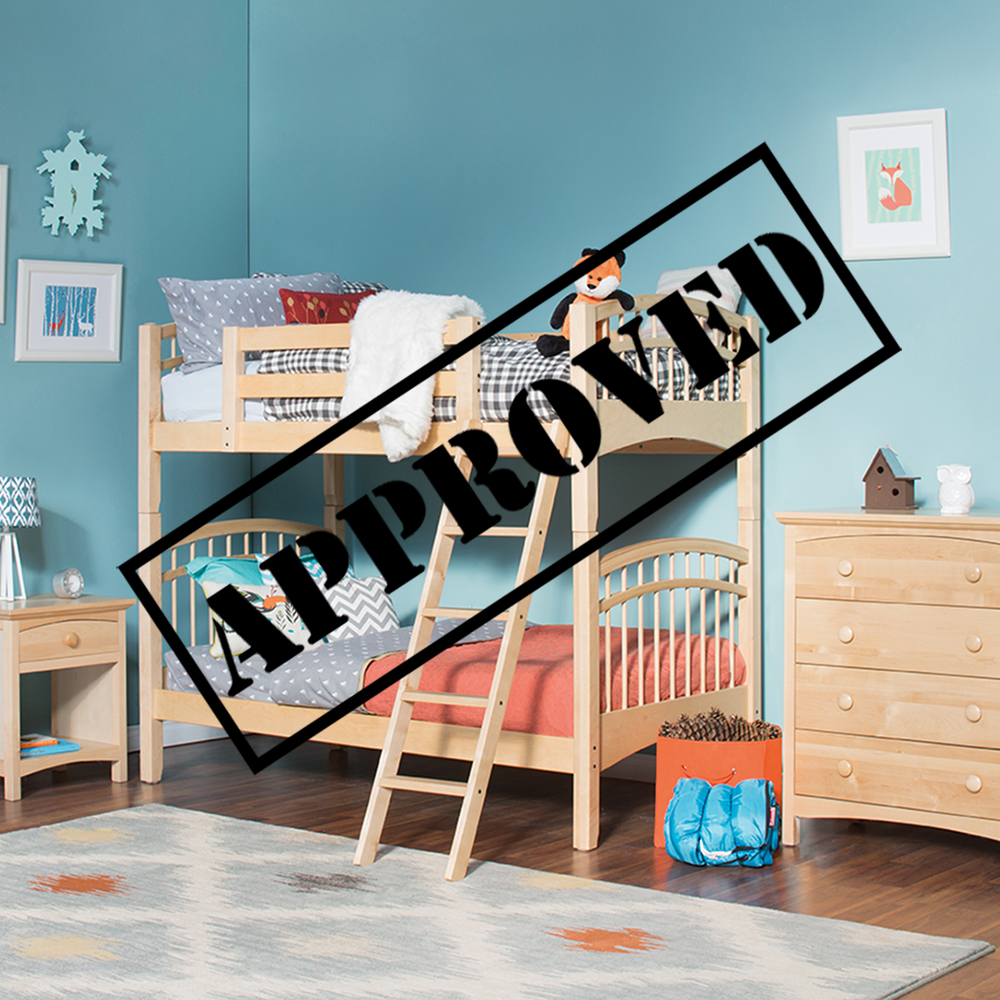At Epoch Design safety is our biggest priority. We build our products to meet rigorous national standards of safety, such as CPSC and ASTM, as well as to meet our own rigorous standards. From the design to the manufacturing, your family’s safety is always being focused on when our furniture is being constructed. We’ve shared bunk bed safety tips with you before too, but this time we wanted to look more into the numbers to see just how safe bunk beds are.
There hadn’t been any significant research into bunk bed safety before the Center for Injury Research and Policy of The Research Institute at Nationwide Children’s Hospital and there hasn’t been any significant research since. This commonly cited study, published in the June 2008 issue of Pediatrics, found that there were an estimated 572,580 bunk bed-related injuries from 1990 to 2005 amongst people aged 0 to 21 years old. It is from this data that many a well meaning but perhaps misleading article about bunk bed safety has been written. If we take a look at these numbers in more detail we’ll see that bunk beds are safer than many would have you believe.
Some of the bunk bed safety articles simply divide the number of injuries by the number of years the study examined. From that they determine that there was an average of 36,000 cases annually. But the problem with that is that bunk beds are progressively being designed with more safety features in place and also the awareness around bunk bed safety is increasing. We cannot simply average out the data when there is most likely increasingly less bunk bed related injuries occurring each year.
Another problem with many of the bunk bed safety articles is that they are stating that those 36,000 per year (which, again, is not an entirely accurate number) are all children. But the cited study includes anyone from ages 0 to 21. Half of the recorded injuries in this study were from children in the 0 to 6 age range. Most reputable sellers of bunk beds have guidelines that state that the upper bunks of bunk beds are not recommended for children younger than 6 years of age. The study also found a high number of injuries in the age range of 18 to 21. These are “children” that are most often using bunk beds in college and the military and some of the injuries can be alcohol related. Around a quarter of the children injured are in the age range of 7 to 10. That is significant and we acknowledge that there are some precautions needed when your child is using a bunk bed.
There are some well agreed upon strategies for preventing bunk bed related injuries. The American Academy of Pediatrics and the Center for Injury Research and Policy have guidelines that they have suggested. These strategies include the use of guardrails on all upper bunks. The gaps in the guardrails are specifically designed to prevent your child’s head or extremities from getting caught. It is also important to make sure that there aren’t any gaps between the mattress and the bunk bed frame.
Perhaps the most important part of bunk bed safety is education. Children should be made aware of any potential dangers. They should be instructed in the proper way to use the ladder up and down the bunk. There should be rules established to prevent roughhousing on the bunk bed and to ensure that the bunk bed is not used as playground equipment.
Some other helpful safety tips would be to have a night light near the ladder so that a child can see the ladder rungs clearly even at night. It is also helpful to keep the bunk bed clear of hanging clothes or towels that could pose possible strangulation risks. Other things to consider before purchasing a bunk bed would be whether or not your child falls out of their bed often, whether they sleep walk, and whether they regularly jump on their current bed.
Bunk beds are a wonderful way to save space in a room and kids do love them too. While there are some safety concerns with an elevated bed the statistics do often seem to be interpreted in a way that inaccurately represents the danger. They are generally a very safe option for children when they include safety features such as guard rails and when the children have some guidelines around the bunk bed. Rest easy that bunk beds are not the threat that some would have you believe.

http://www.nationwidechildrens.org/cirp-bunk-bed-safety
http://learningcenter.statefarm.com/residence/safety-1/bunk-bed-safety-tips/
http://aapnews.aappublications.org/content/33/7/22.6.full